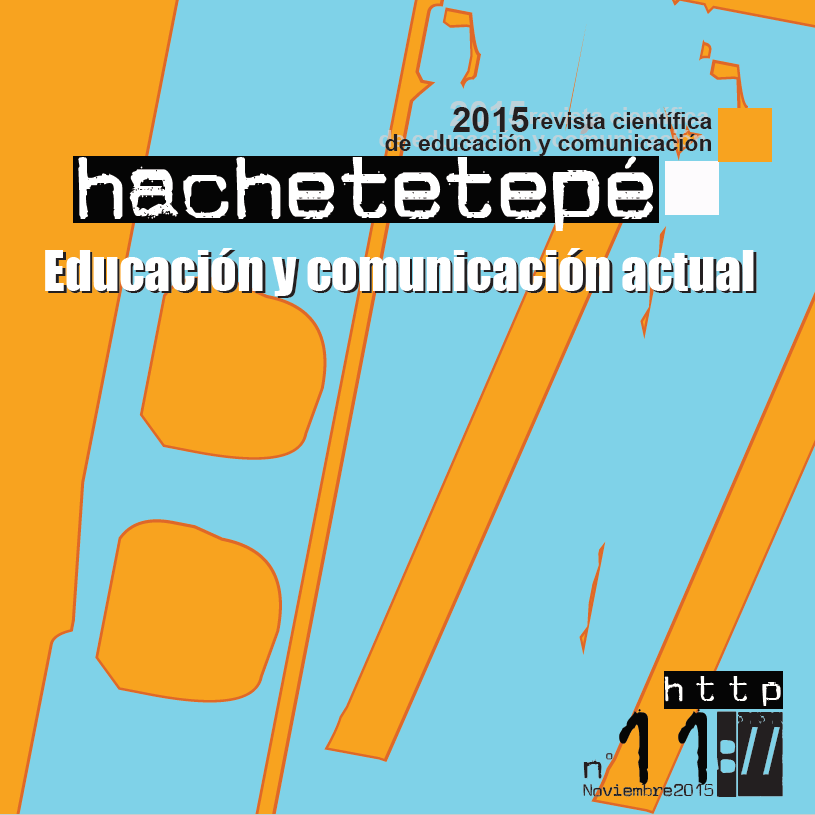Educating with mass media, a review from the classics. Two centuries of education: from Freinet to Wikipedia

Info
Abstract
Two centuries have passed since Freinet used newspapers in and out the classroom with their students to investigate and observe the streets (outdoor teaching). Today the EHEA recognizes this practice. This phenomenon, that began as a revolutionary experiment, is an undeniable reality in the 21st century. ICTs allow people to experiment and innovate their teaching methods using tools that transform education and reality. This study reflects on teaching methods that have to find their path into practical learning outside the classroom (streets or organizations). The learning process is permanent (long life learning) and never ends. The Freinet model that seemed revolutionary in older times, now is standard educommunication disciplines (Media Literacy), allow to observe learning in any stage where mutable tools are used to obtain immutable knowledge.
Keywords
Downloads
How to Cite
License

This work is licensed under a Creative Commons Attribution-NonCommercial-NoDerivatives 4.0 International License.
Those authors who have published with this journal, accept the following terms:
- They will retain their copyright and guarantee the journal the right to first publication of their work, which will simultaneously be subject to the Creative Commons Attribution License . They may be copied, used, disseminated, transmitted and publicly displayed, provided that the authorship, url, and magazine are cited, and are not used for commercial purposes. No derivative works are allowed.
- They may adopt other non-exclusive license agreements for the distribution of the published version of the work (e.g., deposit it in an institutional telematic archive or publish it in a monographic volume) provided that the initial publication in this journal is indicated.
- Disseminate your work through the Internet (e.g., in institutional telematic archives or on your website) once the manuscript is accepted, which may lead to interesting exchanges and increased citations of the published work. (See The effect of open access).
Hachetetepé. Scientific journal of education and communication does not charge a fee for the submission of manuscripts or for the publication of its articles.
References
ANECA (2003). Programa de Convergencia Europea. El crédito europeo. Madrid: Agencia Nacional de Evaluación de la Calidad y Acreditación.
Aparici, R. (1997). Educación para los medios. Rev. Voces y Culturas, 11/12; 89-118.
Barckley, E.F., Cross, K.P. & Major, C.H. (2005). Collaborative learning techniques: A handbook for college faculty. San Francisco: Jossey-Bass.
Bryant, T. (2006). Social software in academia. Educause Quartely, 2; 61-64. (http://cort.as/YE85) (15-08-15)
Castells, M. (1983). The city and the grassroots. Londres: Edward Arnold.
Castells, M. (1997). La era de la información: Economía, Sociedad y Cultura. Título original: The
information Age: Economy, Society and Culture (1996). Vol I: La sociedad red (The rise of the network society). Vol. II: El poder de la identidad (The power of identity) Madrid: Alianza. First Published in the United States by Blackwell Pub. Inc., Cambridge, M.
Chomsky, N./Ramonet, I. (1997). Cómo nos venden la moto. Barcelona: ICARIA. Traducción de N.
Chomsky: Joan Soler, de I. Ramonet: María Méndez.
Elgort, I. (2007). “Using wikis as a learning tool in higher education”. ICT: Providing choies for learners and learning. Proceedings ascilite Singapore 2007. (http://cort.as/YE7u) (15-08-15)
Fernández, S. (2010). Vivir sin miedos. Atrévete a comenzar de nuevo. Barcelona: Plataforma.
García-Noblejas, J. J. (1997). Medios de conspiración social. Pamplona: EUNSA.
González, J. & Wagenaar, R. (Coords.) (2003). TUNING. Educational structures in Europe. Informe final. Fase 1. Bilbao: Universidad de Deusto.
Green, M. (1993). Contextos sociales y los usos de la investigación. Medios de comunicación, educación y comunidades, en Jensen, K.B. Metodologías cualitativas de investigación en comunicación de masas. Barcelona: Bosch.
Guzmán Ibarra, I., Marín Uribe, R. & Inciarte González, A.J. (2014). Innovar para transformar la docencia universitaria. Un Modelo para la formación por competencias. Maracaibo (Venezuela): Universidad de Zulia.
Jensen, K. B. (1993). Públicos mediáticos. El análisis de la recepción: la comunicación, educación y comunidades, en Jensen, K.B./Jankowski, N.W. (Eds.).Metodologías cualitativas de investigación en comunicación de masas. Barcelona: Bosch. Título original: Qualitative methodologies for mass communication research. Londres: Routledge. Traducción: Joan Soler.
Kaplún, M. (1997) Pedagogía de la comunicación, Barcelona, Rev. Voces y Culturas, 11/12; 69-88.
Moscoso Sánchez, D. J. (2004). De la Galaxia Gutenberg a la Galaxia Internet: la ‘itinerancia’ en la lectura, Comunicar. Revista científica de Comunicación y Educación, 23; 124-128.
Noble, G. (1978). Children in front of the small screen. Beverly Hills, CA: SAGE.
Ureña, E. M. (1998). La teoría crítica de la sociedad de Habermas: la crisis de la sociedad industrializada. Madrid: Tecnos.
Wimmer, R. D. & Dominick, J. R. (1996). La investigación científica de los medios de comunicación. Barcelona: BOSCH. Título original: Mass Media Research. An introduction (1994), by Wadsworth. Traducción: J. Luis Dader.

